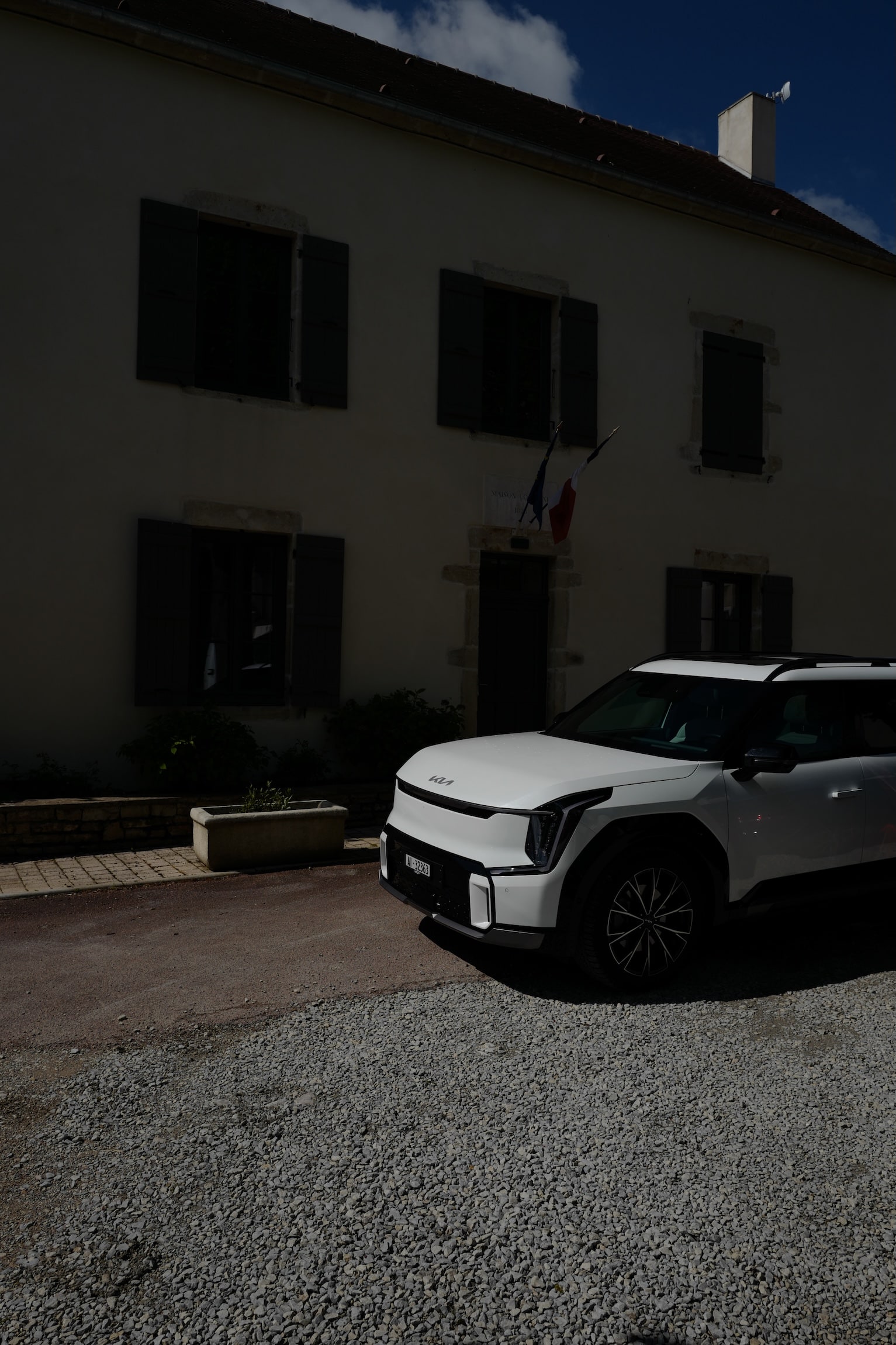Kia EV9 (2025) Review

The Kia EV9 holds the new record for largest car benchmarked by NUXI. It offers a comfortable ride for four adults with ample storage for groceries, luggage and pets. It’s a car where the primary user could be any one of the four occupants. The rear seats in our GT trim are heated, ventilated and recline, and while the front seats recline to almost flat and offer lumbar support and massage, the second row is a great place to be.
As configured the 2025 Kia EV9 GT-line is about 83.000€. What do you get for the money? The experience can be broken down into three main chapters: ride comfort, interface and performance.

Comfort encompasses ergonomics, and the first contact is with the seat and its plush headrest: A 3D-mesh similar to that of the Apple HomePod provides basic support and keeps the head steady, and a foam backing protects from bumps. From the second row the see-through property of the mesh gives the impression of airiness.

It’s the best headrest I’ve ever seen: large and soft, cushioned and safe. It feels like an analogy to the car itself. Kia should sell them separately.
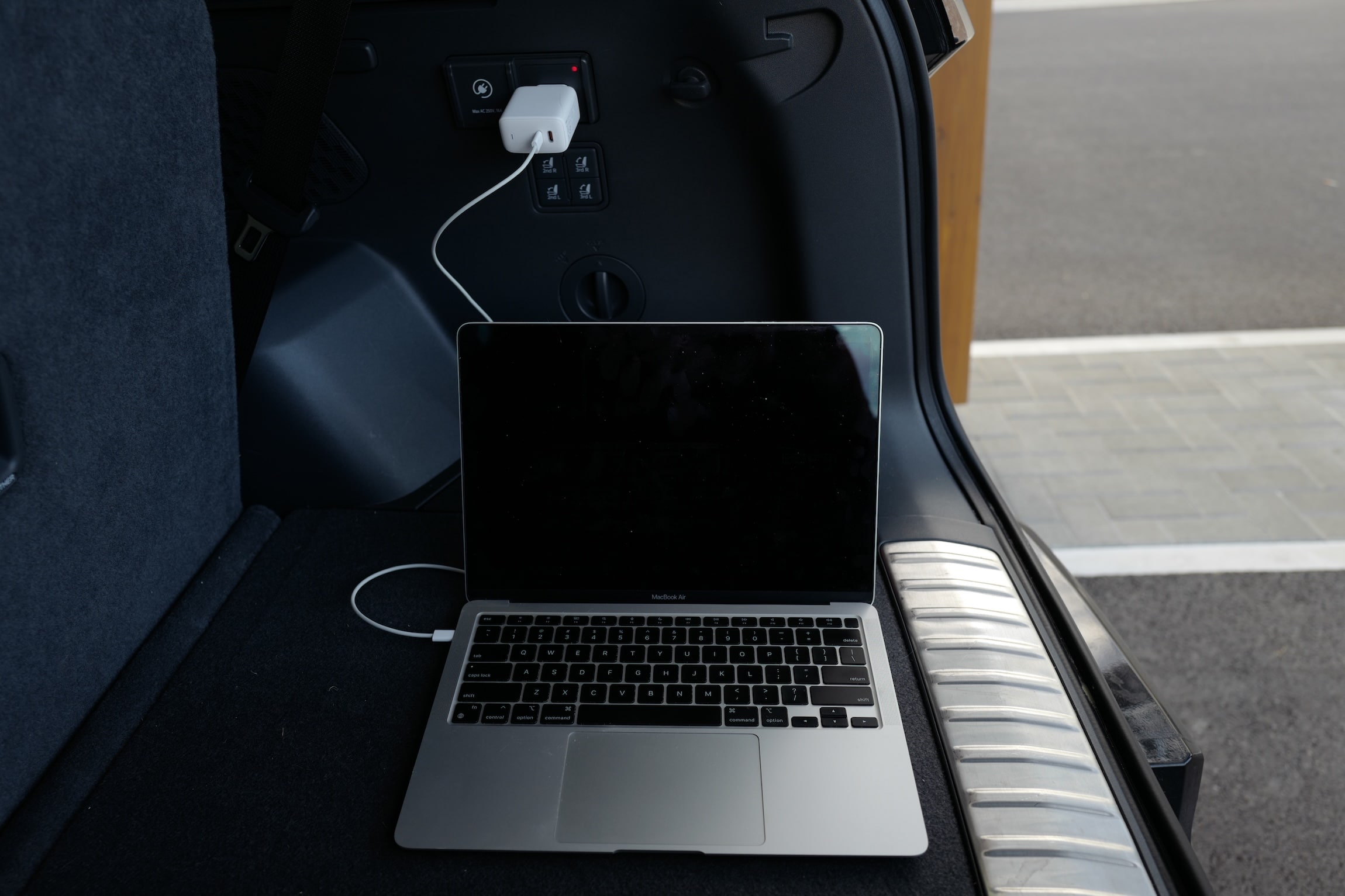
While the headrests of the second and third rows doesn’t have the mesh, they are still comfortable, as are the seats. The third row lacks in legroom, but if the second row is moved forward those rear seats become acceptable. That said, we used the car with the third row folded down to increase the trunk space.
To fold down the seats there is a set of controls in the trunk, above which is a real power plug. The array of buttons needs to be studied closer, as some seats can electronically move up and down and others only fold. In day-to-day operation the seats aren’t often reconfigured, but centralised controls for this are appreciated.
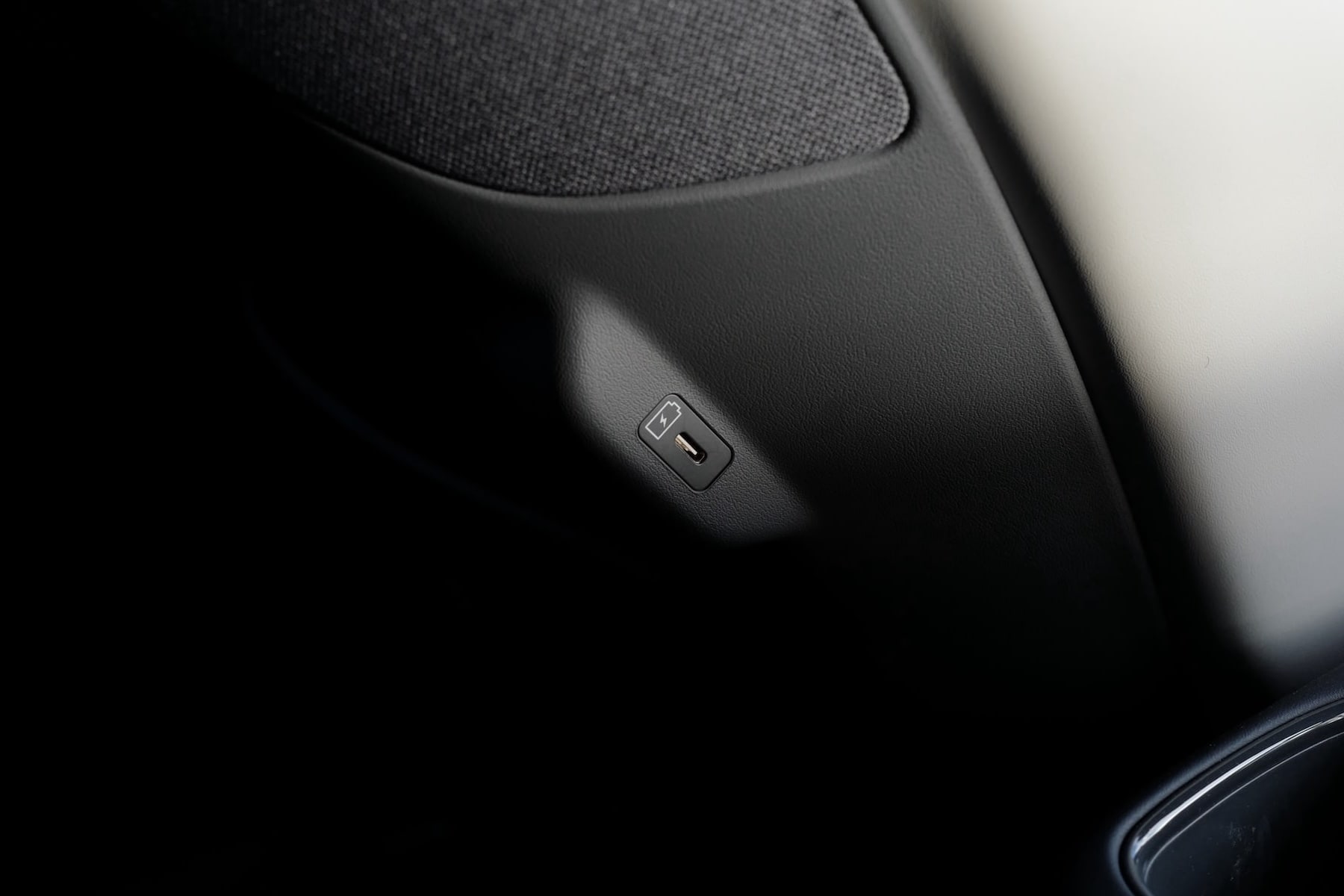
Notably, the power socket was localised to Switzerland, the country of registration of the car. Moreover, there are seven USB-C charging ports throughout the car, as well as a wireless charger in the front. One of the USB ports is also for wired data transfer, and CarPlay is supported both in the wires as well as in wireless configuration.
It’s a large car, just over five meters in length, and the distribution of controls, cup holders, and chargers was thoroughly considered: Each seat has generous storage — even the third row — and more cupholders are hidden in the armrest of the second row. In fact, this car can be configured as a six-seater, with revolving captain’s chairs in lieu of the second row, which should allow for easier third row access.
The ergonomics extend to the interface and general user experience of the HMI. Quotidian controls are physical: the steering wheel has real buttons, and even the rear has a dedicated climate bar.
But let’s start with the app.
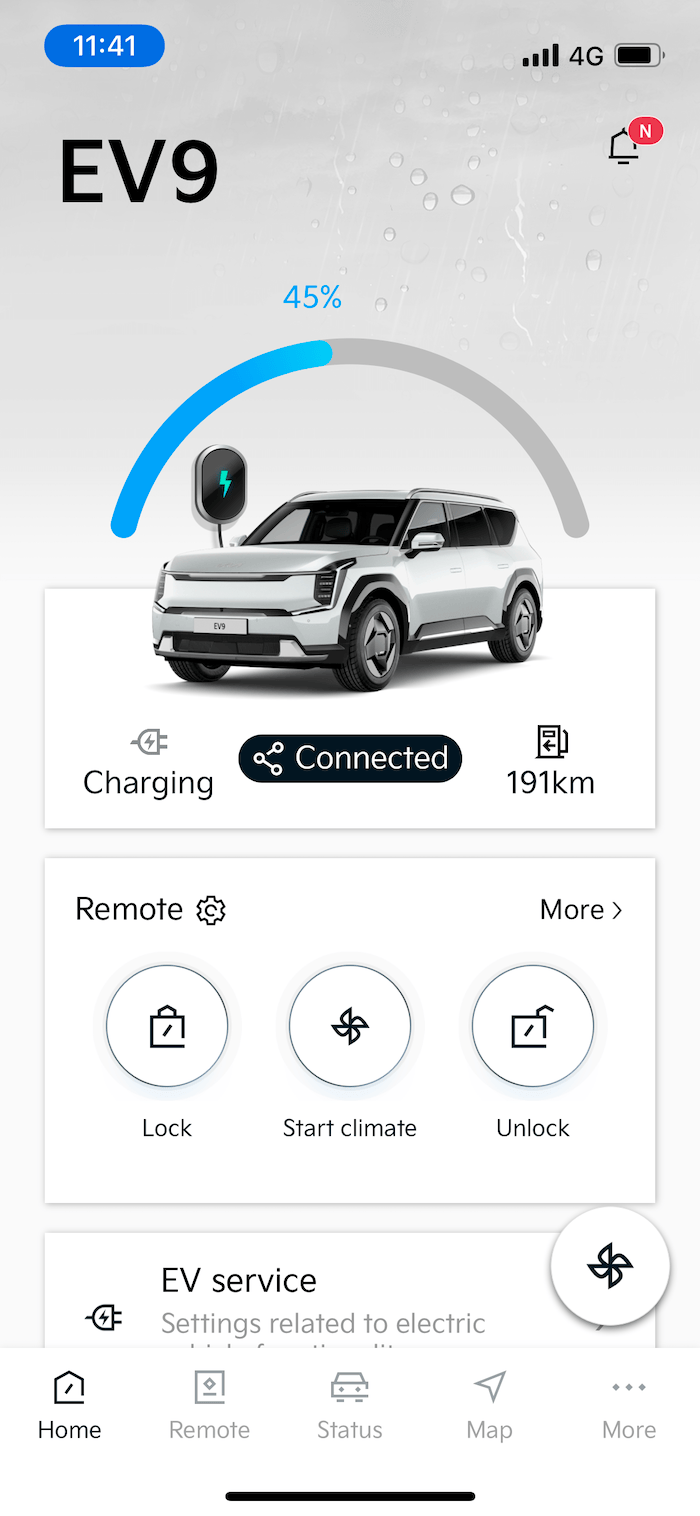

I’m not the owner of this car, and yet (!) was able to connect my phone to it. I wasn’t able to use the Apple Wallet-integrated CarKey feature, but that could have been user error. In general this app isn’t great: button states aren’t clear, the information hierarchy is flat and popups look like wireframes. The app also doesn’t communicate the car’s SoC to the iPhone’s lock screen through Live Activities. Nonetheless, Kia deserves credit for allowing telemetry at all.
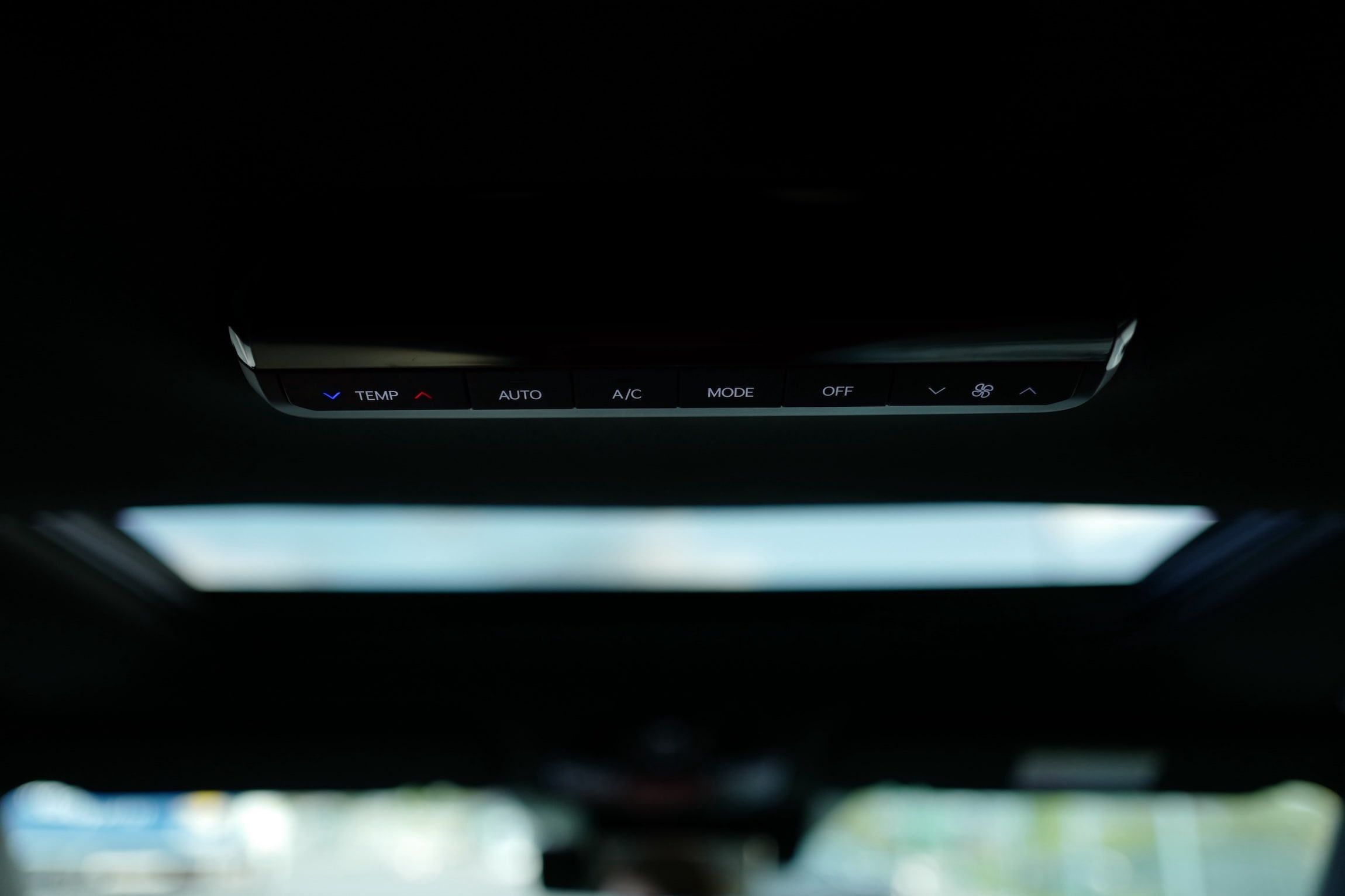
Each door has buttons for seat ventilation and heating, and the driver door gets additional controls for massage, steering wheel heating and seat positions. Alas, the seat position cannot be saved while driving, which seems to be the only time when seats are being repositioned.
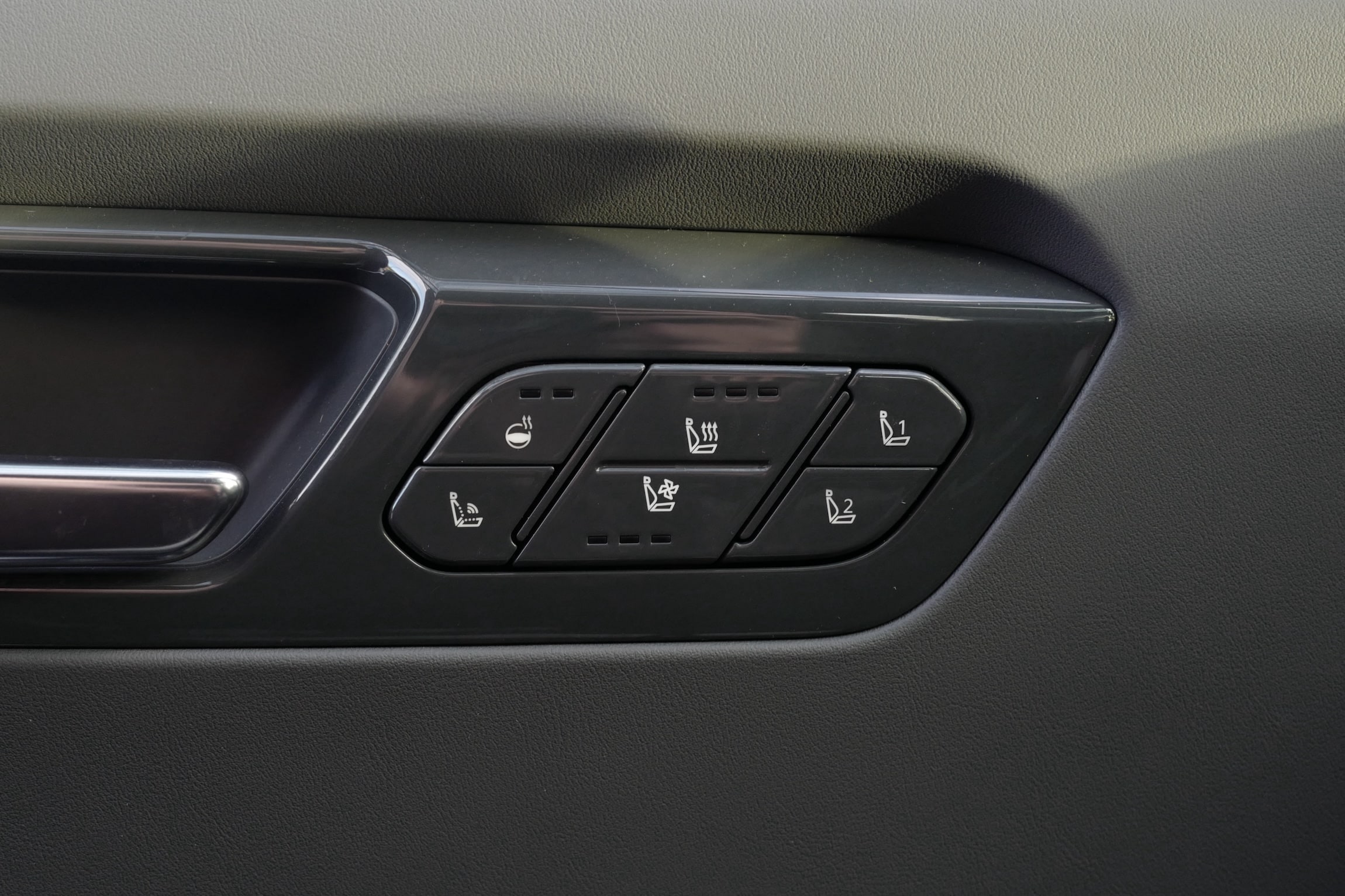
It’s a balancing act for a manufacturer to decide which functions to block while driving. On one end of the scale is Tesla, who allow virtually all features to be accessed and modified while stationary, driving, or remotely via the app. A more careful brand such as Audi even prevent the sound EQ from being adapted when in motion. If a control is physical, there is an expectation that interaction is always possible — stationary or not. A soft key in the digital HMI has button states (idle, pressed, disabled, etc.), and users have a certain familiarity with the concept of a disabled button. Here, Kia’s button is counterintuitive: it exists physically, it can be pressed, but the only feedback that the feature is currently inaccessible happens on the center console display.
The seat massage button is strange too. At some point during the drive I saw a popup with different massage settings, but never saw this info again. Pressing the button only seemed to toggle the function on and off, not cycle through the types.
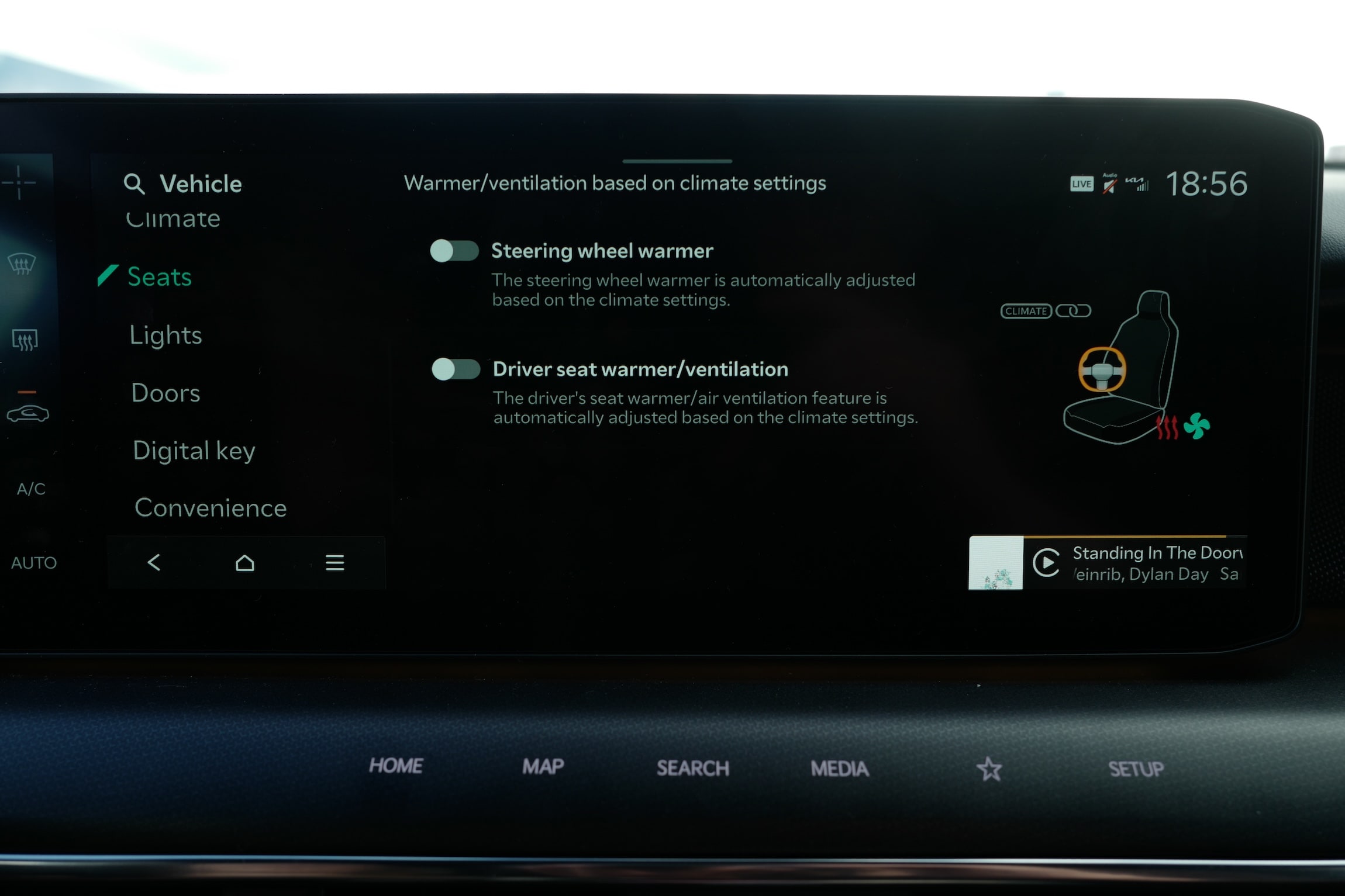
Basic, everyday control elements for climate are physical, and a deep dive into the system is rewarded with smart additional features. The exact arrangement and division of functions can be debated, but Kia deserves praise for having a sensible approach to physical controls enhanced through digital features.
The HMI is shared between all recent BEV Kia models, and are similar in their parent company Hyundai. The EV9 experience makes me want to try the baby version EV3, the sporty EV6 and the step-sibling Ionic 5.
Least interesting for NUXI but notable for this gigantic SUV is the performance.

Kia claims just over 500 kilometres of range based on mixed use. In our testing it was closer to 400 km with four people and a fully-loaded trunk, driving on mostly country roads, in fresh spring climate. Impressive for a gross weight of about three tons, a battery of 99.8 kWh and AWD motors with 283 kW. It does 0 to 60 km/h in 2.4 seconds, a value much more practical in daily drives than 0 to 100 (which it does in 5.2 seconds). The EV9 GT it almost too powerful: with luggage and passengers the driver needs to tread carefully as to not throw people and things around. Like the Cadillac Lyric, the EV9 seems to defy the laws of physics.
Also like the Lyric, the EV9 feels like a third place: a cosy, portable and cosy environment. You’ll look forward to standing in traffic on a winter day with air conditioning, music, and a warm back massage. Aerodynamically it’s a box, and air resistance can be heard from 110 km/h, and annoy from 130 km/h. Low speeds feel better, and extend the efficiency of the battery as well as the duration of the experience.
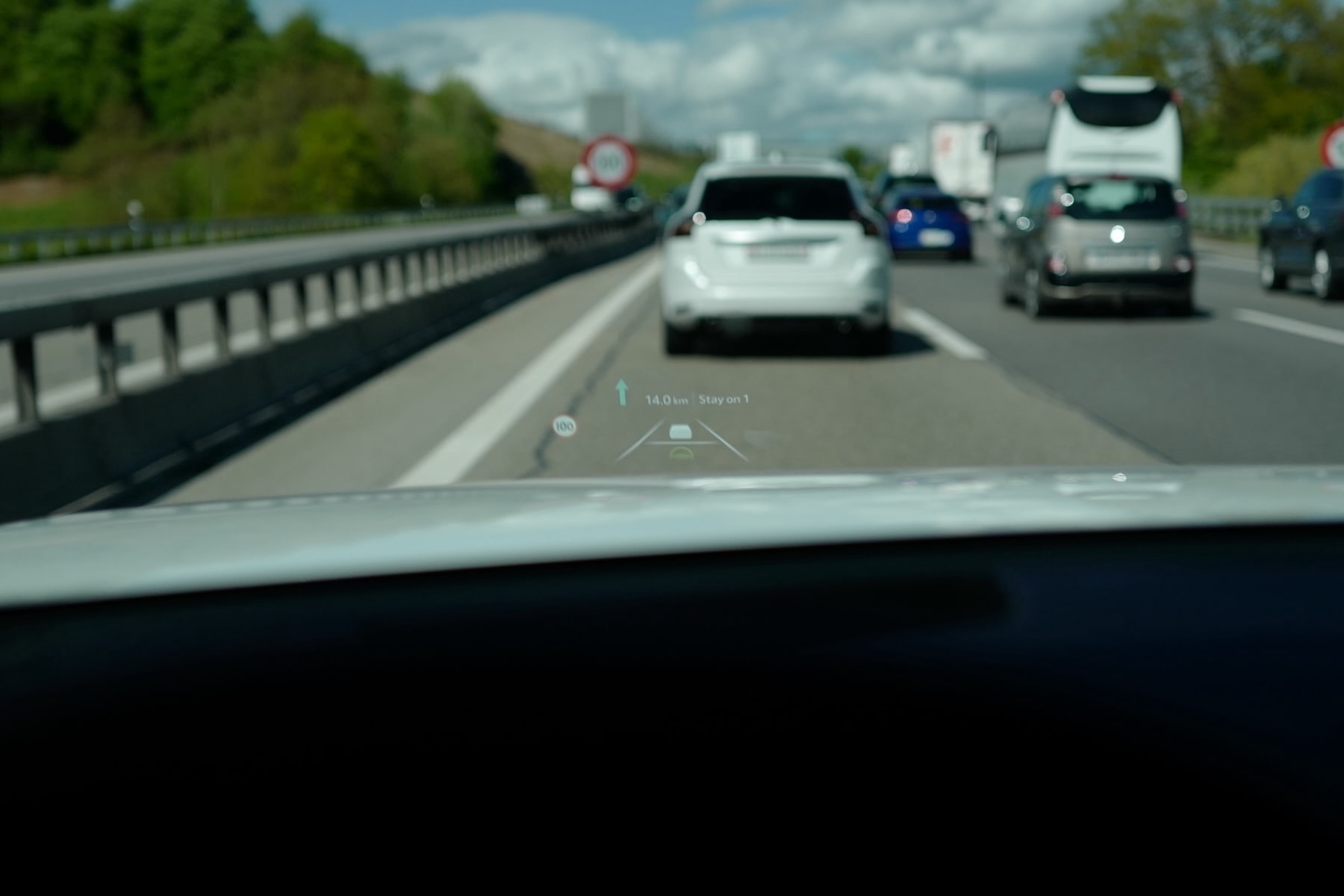
The head-up display shows relevant driver information such as traffic signs, lane guidance, ADAS, and directions. It also switches from driving information to a “full-screen” display of caller ID. Incoming calls look like a popup with the name and/or number of the caller, momentarily hiding the driving information. Upon consideration the decision to hide driving information during a drive might be controversial, but in the moment the switch felt absolutely natural (it happened in traffic, no important turn was missed). It’s difficult to take a focused photo of the HUD, in real life it feels sharp and bright, with the right amount and size of information. Audi’s HUD felt too sharp, and its AR navigation arrows were trying too hard.
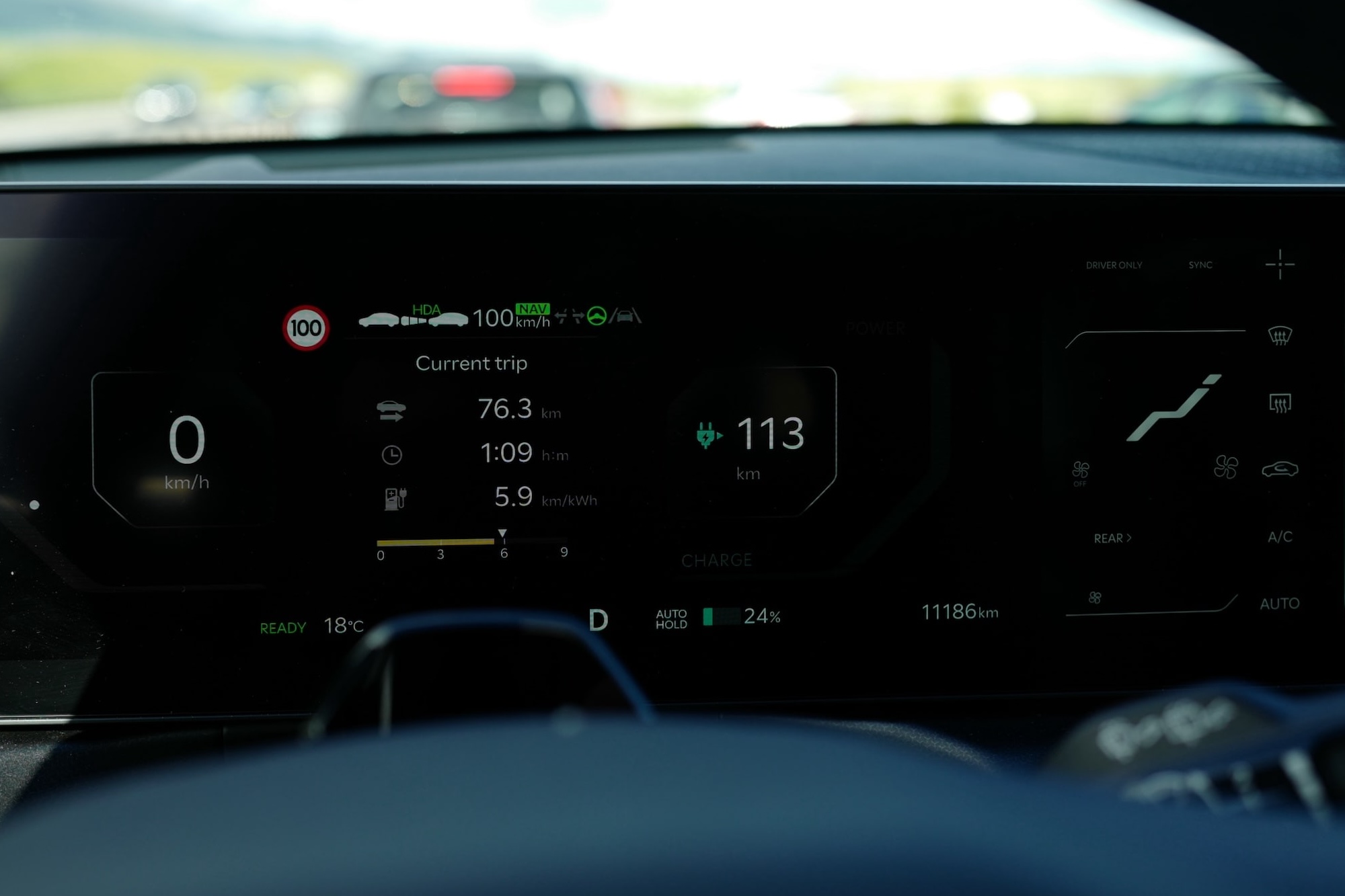
All other driver information is on the cluster screen. While driving I found myself rarely looking at it — the HUD does a good job! I don’t remember if the HUD shows the current speed, but the car will not miss a chance of reminding you that you’re going too fast! The TSR is very aggressive and even 1 km/h over the limit will prompt an alarming chime. Pressing and holding the mute button on the steering wheel (the right roller) will pause the chime, but only until the next infringement. NUXI does not advocate speeding, we’re just here to point out that TSR doesn’t always work, and it can cause frustration (as it did in the Kia) to have a clash between the driver’s interpretation of reality and that of the car.
Also in the cluster screen and in an awkward albeit omnipresent location are the digital climate controls. They are mostly obscured by the steering wheel but provide good shortcuts for functions without hard keys such as the rear defrost button or A/C.In this spring test drive of five days both functions were needed! At times each occupant had different seat climate settings: some had ventilation, others heating. Unfortunately the EV9 doesn’t allow simultaneous heating and ventilation of the seat.

The seven-seater stands out in rural Burgundy. It provides luxurious comfort for all passengers at the cost of size. It also does this at the cost of cost. Kia made choices and tradeoffs with the EV9 and proposes a package optimised for families on wide and straight roads at moderate speeds. It adapted well to serpentines, to highways, rain and sunshine.
It was happiest going 80 km/h in a straight line. The Kia EV9 is not a car for being in a rush.
